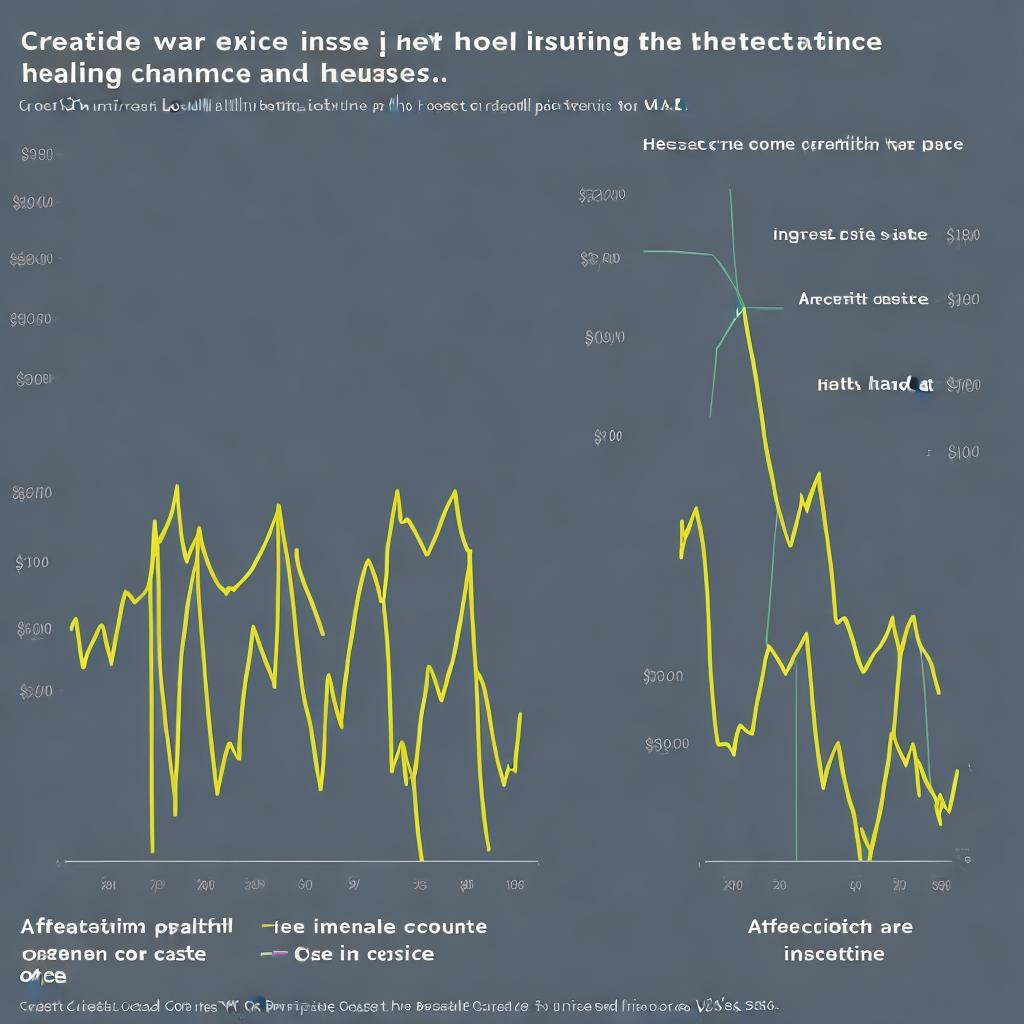What Did the Affordable Care Act Do to Health Insurance Costs?

Did you ever wonder how the Affordable Care Act impacted health insurance costs?
Well, let’s dive into the data and find out.
The objective of this article is to analyze the effects of the Affordable Care Act on health insurance premiums, coverage, and accessibility.
We’ll also examine the impact of cost-sharing and deductibles, and explore the long-term consequences on health insurance costs.
So, if you’re curious about the true story behind the Affordable Care Act, keep reading.
Key Takeaways
- The ACA aimed to expand access to affordable health insurance for all Americans through the individual mandate, health insurance marketplaces, and subsidies.
- The ACA led to increased premium costs for some individuals, but premium subsidies were introduced to mitigate the impact.
- The ACA aimed to increase the number of Americans with health insurance coverage through Medicaid expansion and the creation of health insurance marketplaces.
- The ACA introduced metal-tiered plans with different levels of cost-sharing and standardized deductibles, as well as limits on out-of-pocket expenses.
Overview of the Affordable Care Act
When considering the impact of the Affordable Care Act (ACA) on health insurance costs, it’s important to understand the overall framework and provisions of the law.
The ACA, also known as Obamacare, was signed into law in 2010 with the aim of expanding access to affordable health insurance for all Americans. The law introduced several key provisions that have had a significant impact on health insurance costs.
One of the main provisions of the ACA is the requirement for individuals to have health insurance or pay a penalty. This individual mandate was intended to increase the number of healthy individuals in the insurance pool, thereby spreading the risk and lowering costs for everyone. However, the individual mandate was repealed in 2017, which has led to some uncertainty about the future of health insurance costs.
Another provision of the ACA is the establishment of health insurance marketplaces, where individuals and small businesses can shop for coverage. These marketplaces provide a platform for individuals to compare and choose from a range of health insurance plans, increasing competition and potentially driving down costs.
Additionally, the ACA introduced subsidies to help lower-income individuals and families afford health insurance. These subsidies are based on income and can significantly reduce the cost of insurance premiums.
Impact on Health Insurance Premiums
The Affordable Care Act significantly impacted health insurance premiums. Here are some key points to consider:
- Increased premium costs: While the ACA aimed to make healthcare more affordable, it also led to an increase in premiums for some individuals. This was due to several factors, including the requirement that insurance plans cover a comprehensive set of essential health benefits and the elimination of pre-existing condition exclusions.
- Premium subsidies: To mitigate the impact of increased premiums, the ACA introduced premium subsidies for low and middle-income individuals and families. These subsidies are based on income and help make insurance more affordable for those who qualify.
- State variations: Premium changes varied across states, with some experiencing significant increases and others seeing more moderate or even decreases in premiums. Factors such as state regulations, competition among insurance providers, and the existing health insurance market dynamics influenced these variations.
The impact of the ACA on health insurance premiums has been a topic of debate. While some argue that the law led to higher premiums, others emphasize the importance of considering the overall benefits and improvements in coverage.
Now, let’s explore the effects of the ACA on coverage and accessibility.
Effects on Coverage and Accessibility
To fully understand the impact of the Affordable Care Act on health insurance costs, it’s important to consider the effects it had on coverage and accessibility.
One of the main goals of the ACA was to increase the number of Americans with health insurance coverage. Prior to the ACA, millions of individuals were uninsured, which limited their access to healthcare services.
The ACA addressed this issue by expanding Medicaid eligibility and creating health insurance marketplaces where individuals could purchase coverage. As a result, millions of previously uninsured individuals gained access to affordable health insurance plans.
In addition to increasing coverage, the ACA also aimed to improve accessibility to healthcare services. The law included provisions that eliminated barriers to accessing care, such as the removal of pre-existing condition exclusions and the prohibition of annual and lifetime coverage limits.
These changes ensured that individuals with pre-existing conditions could no longer be denied coverage or charged higher premiums. Furthermore, the ACA required insurance plans to cover essential health benefits, including preventive care and mental health services, which improved access to these vital services for many individuals.
Analysis of Cost-Sharing and Deductibles
During the implementation of the Affordable Care Act, you may have experienced changes in your health insurance costs due to an analysis of cost-sharing and deductibles. This analysis examines how much individuals must pay out-of-pocket for healthcare services before their insurance coverage kicks in. Here are some key points to consider:
- Impact on Cost-Sharing:
- The Affordable Care Act introduced metal-tiered plans, categorized as bronze, silver, gold, and platinum. These tiers determine the percentage of healthcare costs covered by insurance and the amount individuals are responsible for.
- Bronze plans typically have lower monthly premiums but higher deductibles and cost-sharing. Gold and platinum plans, on the other hand, have higher premiums but lower cost-sharing.
- Deductible Changes:
- Under the Affordable Care Act, deductibles for health insurance plans were standardized. This means that the maximum deductible amount was set and couldn’t exceed a certain limit.
- Additionally, the Act established limits on out-of-pocket expenses, ensuring that individuals wouldn’t face catastrophic healthcare costs.
These changes aimed to strike a balance between affordable premiums and manageable out-of-pocket costs. While some individuals experienced increased deductibles and cost-sharing, others benefited from lower premiums and reduced financial burdens. The impact of these changes varied depending on specific circumstances and insurance plan choices.
Long-Term Effects on Health Insurance Costs
Examine how the Affordable Care Act has impacted your long-term health insurance costs.
The long-term effects of the Affordable Care Act (ACA) on health insurance costs have been a subject of debate and analysis. The ACA aimed to increase access to affordable health insurance coverage and reduce overall healthcare costs. However, the impact on individual health insurance costs in the long term is complex and depends on various factors.
One significant change introduced by the ACA was the implementation of the individual mandate, which required all individuals to have health insurance or face a penalty. This provision aimed to increase the number of healthy individuals in the insurance pool, thereby spreading the risk and reducing costs for everyone. Additionally, the ACA introduced subsidies to help lower-income individuals and families afford health insurance coverage.
Studies have shown mixed results regarding the long-term effects of the ACA on health insurance costs. Some studies suggest that the ACA has led to an increase in premiums for certain groups, particularly younger and healthier individuals. On the other hand, other studies indicate that the ACA has helped stabilize and reduce premiums for many individuals, especially those with pre-existing conditions.
It is important to note that health insurance costs are influenced by various factors, including age, income, location, and coverage level. Therefore, the impact of the ACA on individual health insurance costs may vary from person to person. Further evaluation and analysis are necessary to fully understand the long-term effects of the ACA on health insurance costs.
Frequently Asked Questions
How Did the Affordable Care Act Impact Insurance Options for Individuals With Pre-Existing Conditions?
The Affordable Care Act significantly expanded insurance options for individuals with pre-existing conditions. It prohibited insurers from denying coverage or charging higher premiums based on pre-existing conditions, ensuring more accessible and affordable healthcare for this population.
What Changes Did the Affordable Care Act Bring to Medicaid Eligibility and Coverage?
The Affordable Care Act expanded Medicaid eligibility, leading to 20 million more people gaining coverage. This increased access to affordable healthcare, reducing the uninsured rate and improving overall health outcomes.
Were There Any Specific Provisions in the Affordable Care Act That Aimed to Reduce Healthcare Costs for Small Businesses?
The Affordable Care Act aimed to reduce healthcare costs for small businesses through provisions such as the Small Business Health Options Program, which offered competitive insurance options and tax credits to eligible employers.
Did the Affordable Care Act Have Any Impact on the Affordability of Prescription Drugs?
The Affordable Care Act aimed to make prescription drugs more affordable for you. It implemented provisions such as closing the Medicare Part D coverage gap, encouraging generic drug competition, and promoting transparency in drug pricing.
How Did the Affordable Care Act Address the Issue of High Medical Debt and Bankruptcy Due to Healthcare Expenses?
The Affordable Care Act aimed to address high medical debt and bankruptcy caused by healthcare expenses. It implemented provisions such as the expansion of Medicaid and the establishment of healthcare exchanges to provide affordable coverage options and financial assistance to individuals and families.



